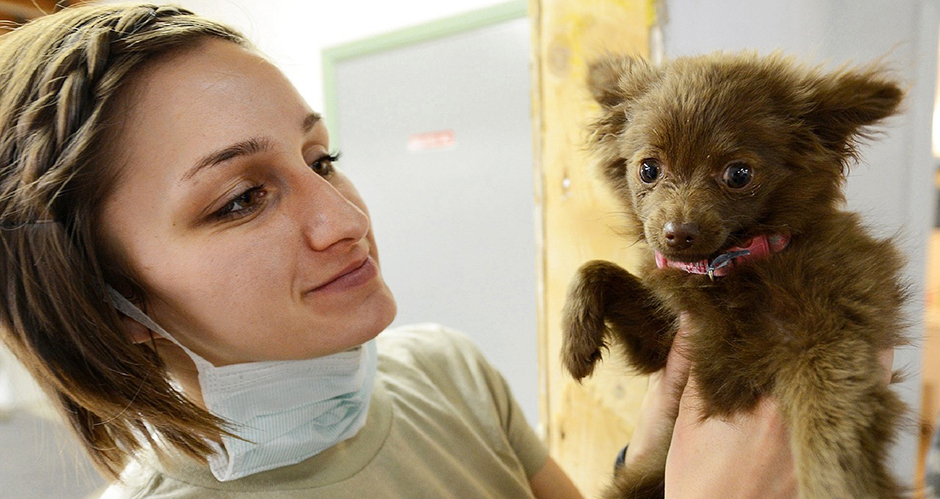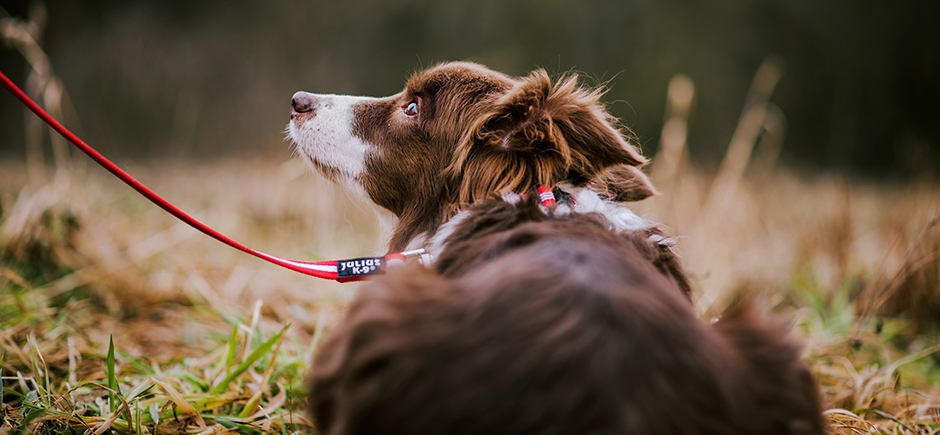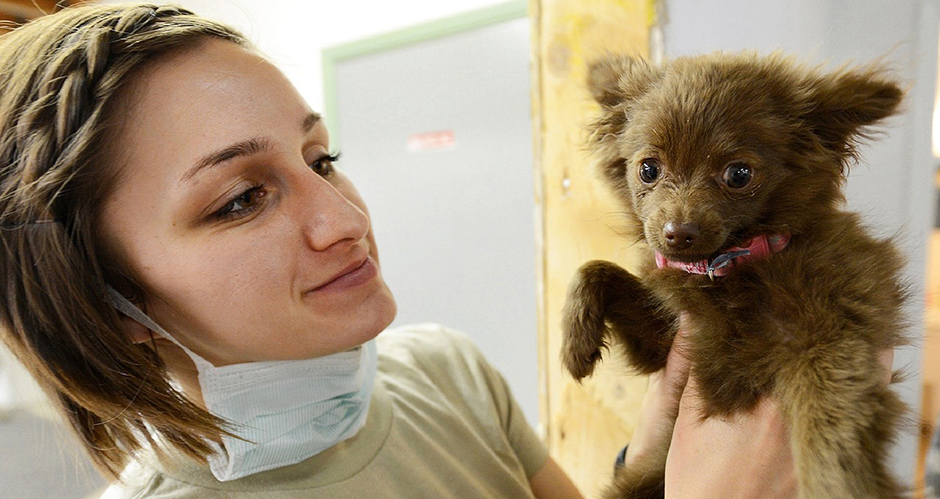People see the doctor only in case there is a problem, thus, we are generally reluctant to make an appointment; be it a doctor or a veterinarian. A dog can easily be affected by your uneasiness, which can give you a hard time during the examination, or even in the waiting room. However, with a little practice you can improve the situation and your veterinarian will also be thankful to be able to examine a cooperative animal.

A puppy’s first experiences with a vet are not necessarily positive; he gets his first vaccinations and has his chip implanted, and these can be slightly painful procedures. In addition, he is placed on a high and slippery table and is touched by a stranger, which many dogs don’t like. Therefore, when getting a new dog (be it young or old) it is worth seeing the vet without any specific reasons, in order to get the dog used to the atmosphere. Make an appointment with the vet, not only to avoid peak times with a lot of sick dogs, but also to meet the vet when there are only a few waiting and he has time for us.
Practice at Home!
It is advisable to arrive at the appointment with a hungry dog and a lot of treats or a favourite toy, because rewards can help an insecure dog overcome his fears in new situations. For example, if he is a little bit afraid to step into the waiting room, you might as well lure him inside with a treat or toy. Once you are inside, but your dog is still afraid or too nervous, and you can see that he has a hard time staying in one place, do not start to stroke him, because you will reinforce unwanted feelings. You might also meet other dogs in the waiting room that raise your dog’s interest. In these cases, speak to him in a calm manner, give him a task, such as a sit or lie down, and when your dog has completed it, you can reward him.

If he jumps up immediately afterwards, no reason to panic, just tell him to lie down again, but this time wait a little bit more with the reward. It is very important that he should already be familiar with the task, start teaching the dog to wait calmly at home or at a dog school, so that at the veterinarian you just have to remind him what you expect him to do.
Apart from waiting calmly, you can also practice specific examinations with your dog at home. Thus, you can get him used to being touched, having his eyes, ears, or teeth examined by someone without any consequences. You should practice these steps yourself with your dog, and if he can tolerate you doing it, you can ask others to examine him. Of course, you should always reward calm behaviour, either by a praise or a treat.

When it is your turn, but your dog doesn’t want to enter the consulting room, lure him kindly in, using a treat if needed. If your dog is really afraid, don’t force him to do anything, just progress in small steps. Ask the vet to ignore the dog and talk to you instead to give a chance for your dog to get used to the situation at his own pace. If he starts to show interest, praise him and ask the vet and the assistant to give a treat to the dog. After your dog has eased up in the new environment, a short examination can be performed; if he behaves calmly during the procedures, remember to always reward him.
However, there are situations when there is little time to get the dog used to a situation because a prompt intervention is needed. In such situations, be firm and help the vet hold the dog down according on the vet’s instructions. However, after such an event you should spend some time to overwrite the bad memories, paying regular visits to the veterinarian so that the dog will have positive experiences.
Same Method for the Groomer
Getting the dog used to different procedures in different surroundings can be useful for the groomer, too. Therefore, if you have a dog that needs regular grooming, it is useful to train him to tolerate being washed, dried and trimmed or sheared already as a puppy, because it will make your job a lot easier than taking him to the groomer for the first time at the age of 1 or 1.5.
All in all, appropriate socialization can make our job easier in a number of situations. Dedicate some time to it! What matters is that you behave calmly in new situations, and you should always have some kind of a reward with you. If you make it possible and help your dog to get used to new stimuli, both you and your dog can save a lot of unnecessary stress.
Orsolya Varga-Molnár
